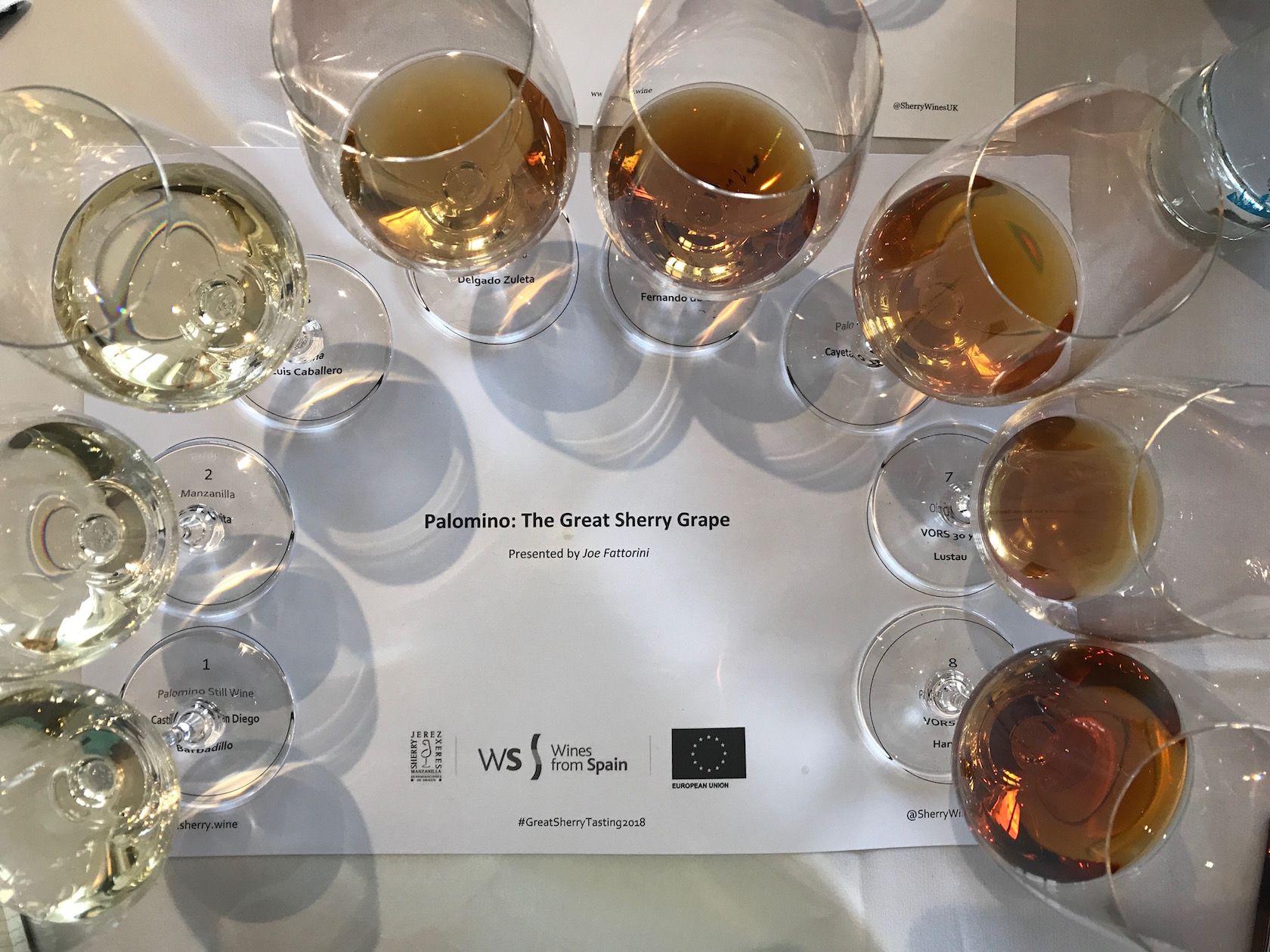Eight sherries were used to demonstrate Fattorini’s point: that Palomino can deliver a bewildering array of styles.
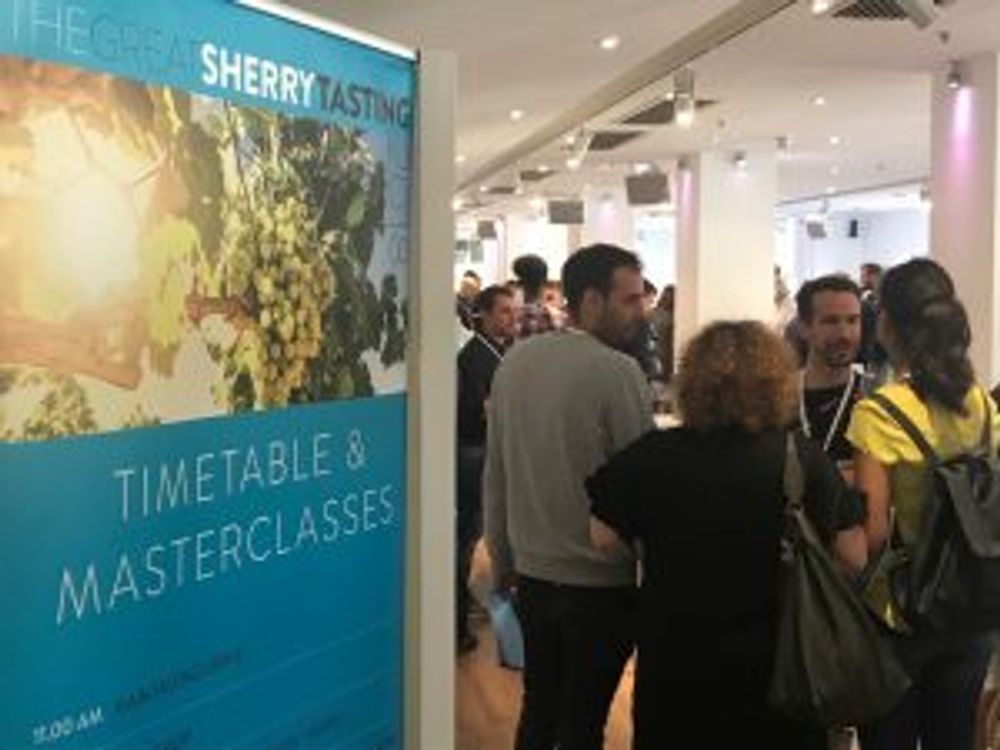
Full house: this year’s Great Sherry Tasting
One of the downsides of sherry’s consistency year in and year out is that promoting it in new ways becomes an increasing challenge for the generic sherry bodies – you can’t talk about the new vintage, but what you can do is get new spokespeople to talk enthusiastically about sherry. And you can get different chefs to try new and wondrous food pairings as they do in the Copa Jerez.
In the past few years we have had the Great Sherry Tasting visited by sherry ‘royalty’ in Beltrán Domecq hosting a masterclass about rare and aged sherries, we have had Fiona Beckett host a marvellous food pairing presentation (onion bhaji and Fino – Wow!) and last year we had two of the world’s top sommeliers taking us through how you become a sherry sommelier.
This year the Great Sherry Tasting employed The Wine Show’s Joe Fattorini to bring some razamataz to a category he clearly is very enthusiastic about. After all, he credits a daily glass of PX with losing six stone in weight “It stops you eating cake.”
His approach in a Masterclass titled Palomino: The Great Sherry Grape was to focus in on Palomino, the grape variety that (along with PX and Moscatel) is the only one that sherry is made from, despite the wine originally being made with 100s of varieties.
“It is particularly the relationship that Palomino has with the albariza soil or terroir of the region,” Fattorini began, “that made it the ideal grape variety and the others no longer to be planted.”

Like the robot in T2, Palomino can become whatever the winemaker wants.
“It’s really like Terminator 2. Not the first Arnold Schwarzenegger film but the sequel where you have this liquid metal robot that is a shape-shifter and can ‘become’ things.”
He went on to explain how, because of the grape’s low malic acid, Palomino can oxidise quickly and reflect various albariza soil characteristics and production methods.
“Palomino can become whatever the winemaker wants it to become.”
“Fundamentally Palomino is ‘sort of’ boring.”
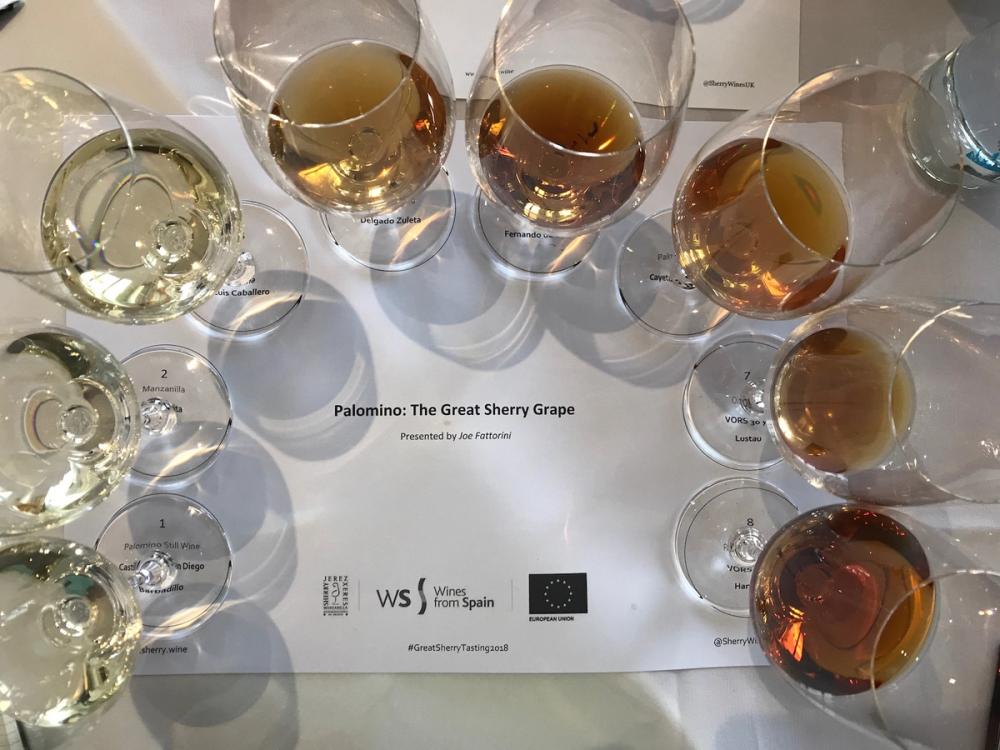
“And, as for Palomino, name me one grape where you can take this journey across all these different styles,”
With eight sherry wines to demonstrate this fact, Fattorini then took the audience through each wine in turn starting with Palomino still wine through increasing shades of amber to a 30 year-old aged Palo Cortado. The wine flight resembled a Caran d’Ache set with only mahogany colours present.
The talk was punctuated with insight and observations and, this being Fattorini, plenty of lengthy asides and humour.
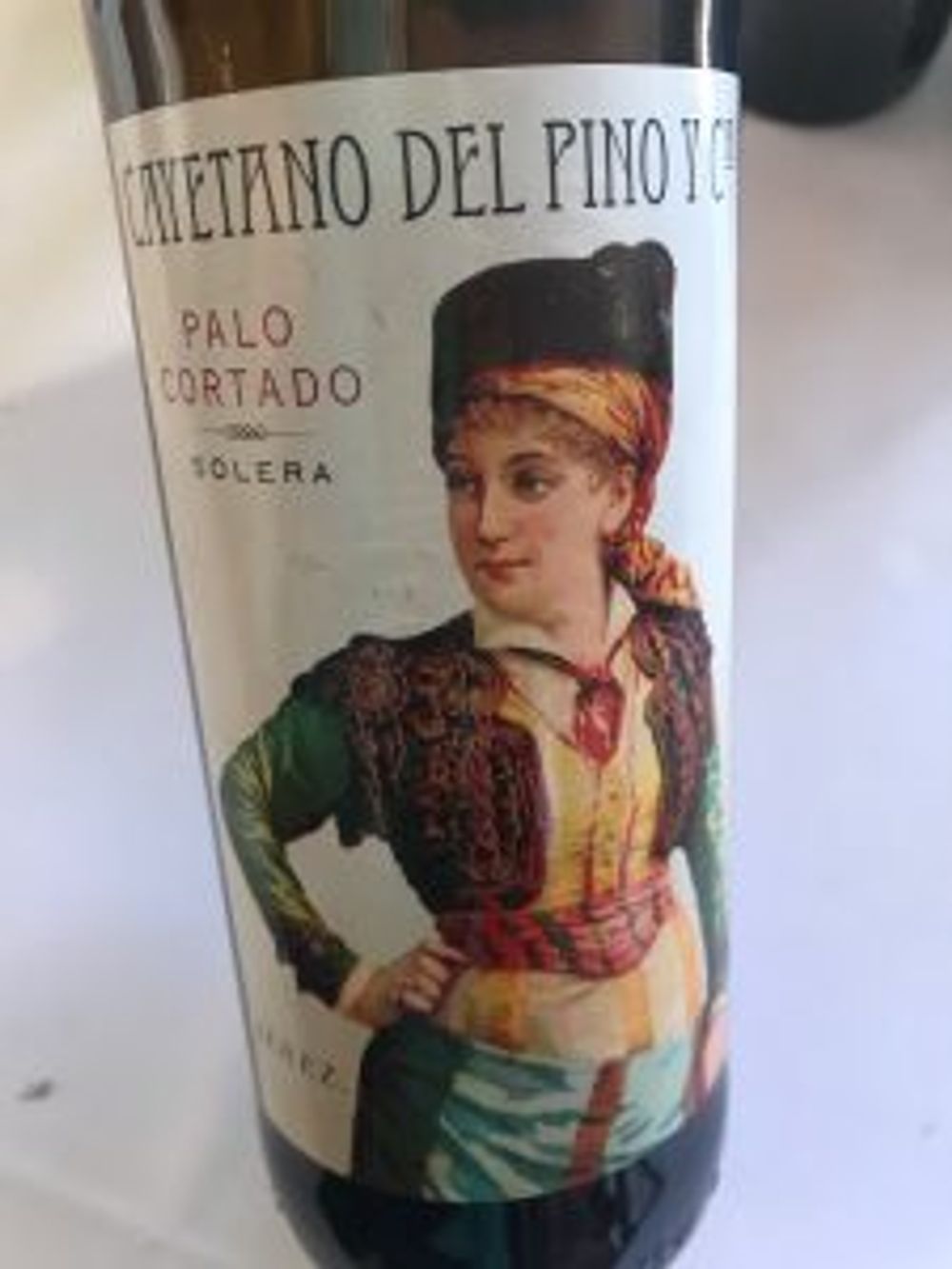
Palo Cortado: like listening to Wagner
While tasting the Palo Cortado from Cayetano del Pino he said “This is degree level wine drinking isn’t it… it’s kind of hard… like listening to Wagner. If someone’s been brought up all their life listening to Bananarama then you don’t just say to them come and listen to The Ring cycle.”
Gazing into the complex, sweet, nutty liquid like a long-lost love, he added “It’s why whisky producers just love sherry barrels and a great example why Palomino is the grape that is used to make sherry. Just imagine this with a grape high in acidity!”
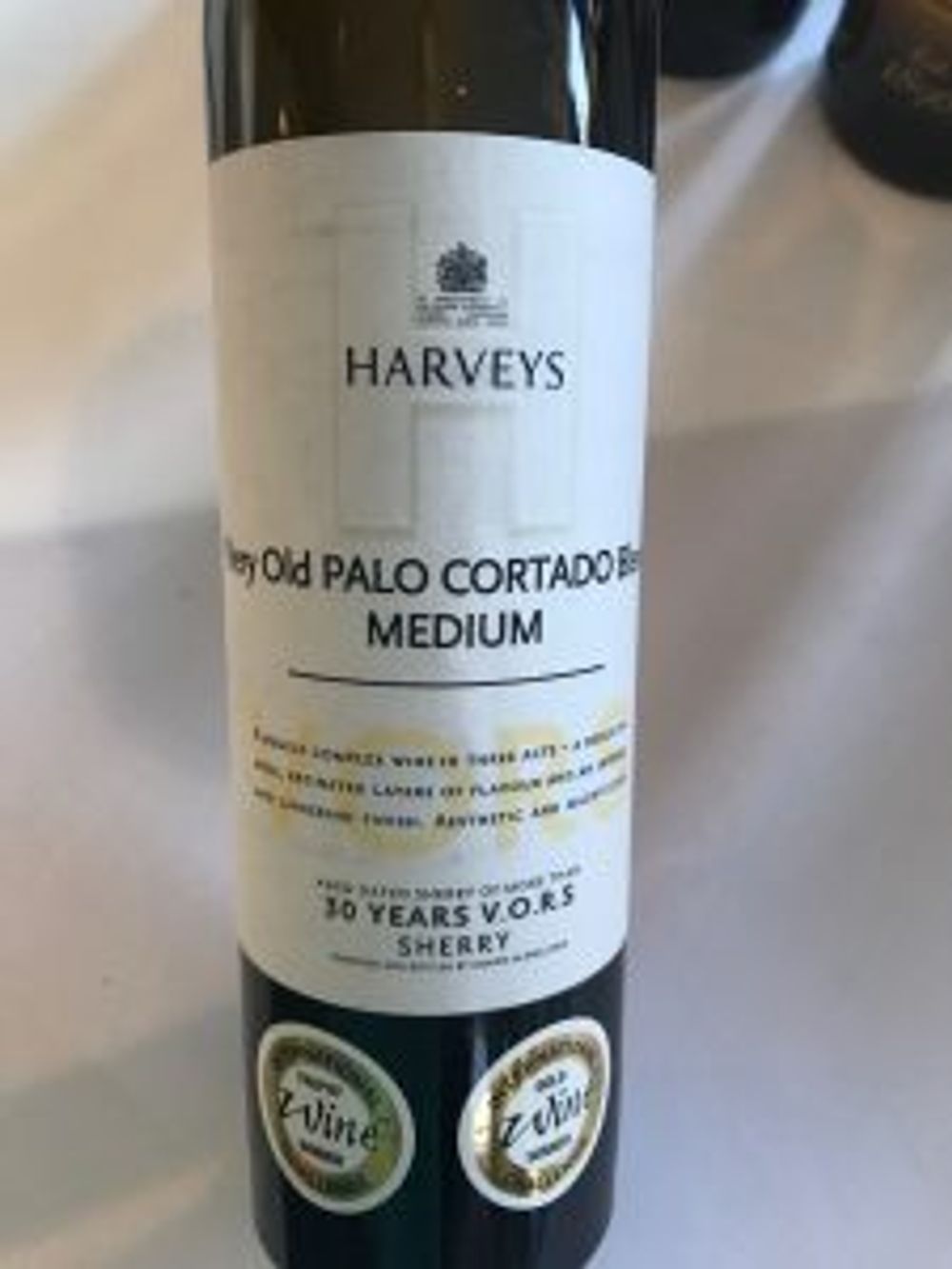
Aged Palo Cortado: with notes of roasted celeriac root and church pews
On the tasting notes for the aged Palo Cortado, the Harveys VORS 30 year old, Fattorini had written ‘roasted celeriac root’ then we lost him for a few minutes as he relayed a story about his Jesuit upbringing and how Palo Cortado reminded him of church pews.
“Here I am trying to popularise sherry and I’m saying it’s like roasted celeriac root and church pews.”
On wine-tasting notes in general, one aside he quipped was that the human olfactory system is only capable of detecting three aromas at any one time “after that it’s sort of fibbing… and it you mention something that people haven’t smelt then they know that you know you’re fibbing.”
There were genuine insights into the way that flor versus oxidative ageing affects glycerine levels in the wine (yeast eats glycerine which means that oloroso – that only has oxidative ageing – is more glyceric and smoother). And then there were more tangents that were never less than entertaining.
“The reason that Samuel Pepys and his lot turned to non-vintage champagne, madeira, sherry and port – was because they were wine styles that weren’t going to end up being shit.”
“And at the end of the day there are two types of consumer and one is the ‘satisfier’ – they’re not that bothered if they’re missing out on something amazing, they just don’t want something that’s shit, and sherry production methods ensures that wines will stay roughly the same year in year out.”
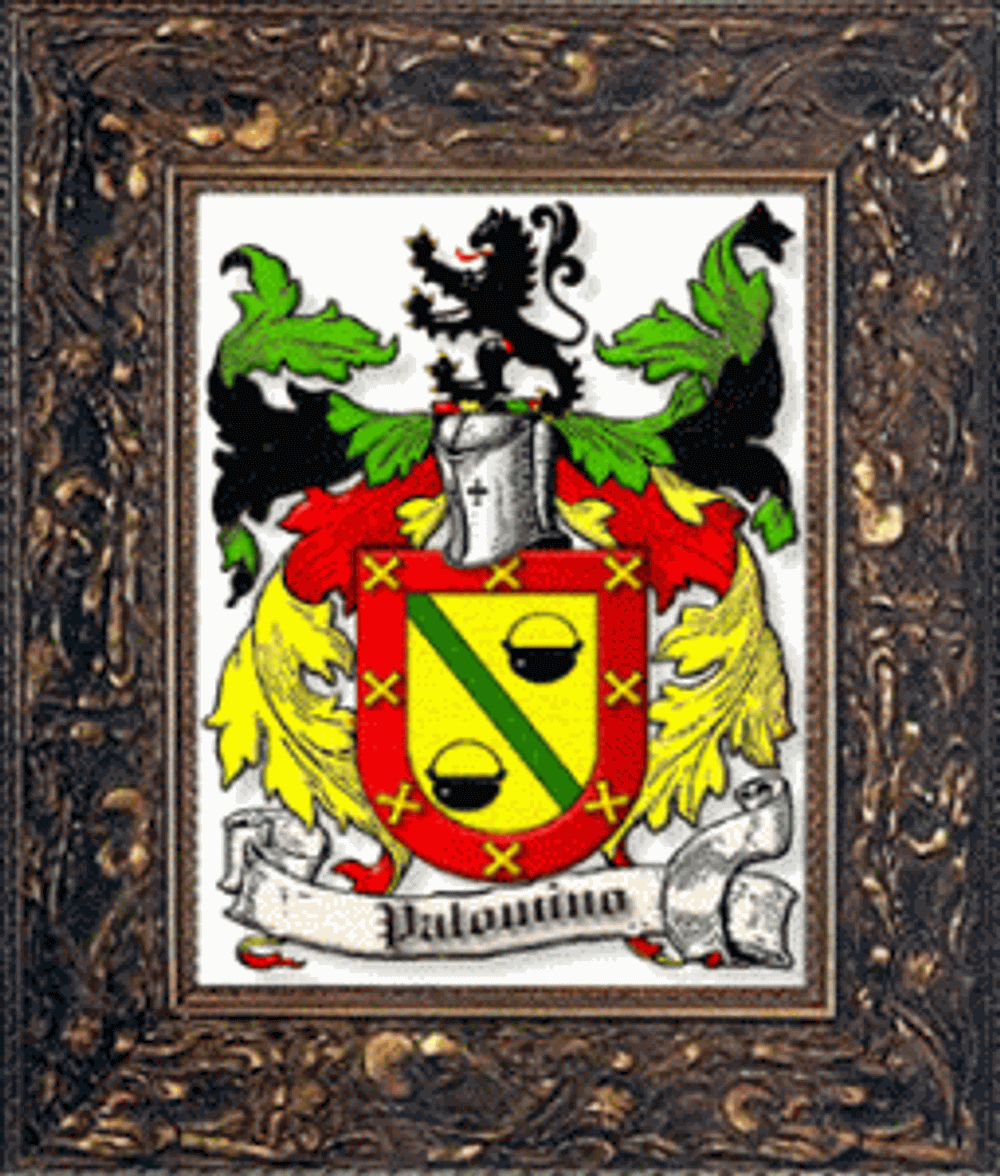
The crest of Fernán Yáñez Palomino: where Palomino started
As for the much-touted Sherry revival, Fattorini did say that sales figures showed growth but cautioned with: “We sit in London and talk about the great Sherry revival and how everyone is drinking it, but I can take you to Bradford and it’s a very different experience, let me tell you.”
On En Rama Sherries: “Sell it to the weirdos – us – the 5%”
On the origins of the name: “Contrary to popular opinion it has nothing to do with the horse, but owes its name to the knight Fernán Yáñez Palomino.” Not a lot of people know that.
“And as for Palomino, name me one grape where you can take this journey across all these different styles,” he asked rhetorically.
“It’s why it’s one of the most magical grapes in the world.”
